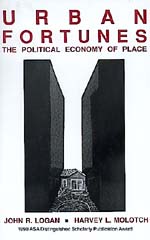
Last week for our culture reading group, I had to lead the discussion on Hebdige’s Subculture: The Meaning of Style, a classic that many had not read. So, instead of giving a mini-lecture on the book, I thought I would give some of the trans-Atlantic cultural exchanges a little context by going through some of the songs that seeped into my psyche when I was too young to know what it was all about. First, I showed them Toots and the Maytals’ 1968 song, ‘Pressure Drop‘ and then the title track cover of Robert Palmer’s 1975 R&B version, and then to show the link from Reggae to Punk: The Clash’s 1978 B-Side. Then The Specials’ version, which only came out in 1996, but their inter-racial ska-punk was certainly influenced by these movements. (And I hate to say it, but it was only when I read Hebdige’s book that I figured out that The Specials’ ‘A Message to You, Rudy‘ and The Clash’s ‘Rudy Can’t Fail‘ were references to Rude Boy subculture–Jamaican patois for a juvenile delinquent.)

Then, just to show that Toots wasn’t oblivious to the way in which cross-cultural exchanges had their benefits, I played for the group their killer rendition of ‘Take Me Home, Country Roads,’ which replaces ‘West Virginia’ with ‘West Jamaica.’
Update: Not completely disconnected, I came across Daniele Tamagni’s new book The Gentlement of Bacongo, a photo essay of the street style of the Sapeurs, or dandies, of the Congo. ‘Sape’ (the ‘Society for the Advancement of People of Elegance’ or ‘Societe des Ambianceurs et des Personnes Elegantes’) is called ‘the religion of clothing.’ According to Dylan Jones, who reviewed the book, Sapeurs ‘fantasise about walking the streets of Paris or Brussels – places most can only dream of visiting – returning to Brazzaville as sartorial aristocrats of ultimate elegance.’ This distinctive style is a rebellion against traditional African costume… There is a strict code of honor and sense of morality as members, and there is no violence or fighting. According to the book, it’s all done with the clothes: Pierre Cardin, Roberto Cavalli, Dior, Fendi, Gaultier, Gucci, Issy Miyake, Prada, Yves Saint Laurent, Versace, Yohji Yamamoto. I would love to see a Hebdige version of this phenomenon.







